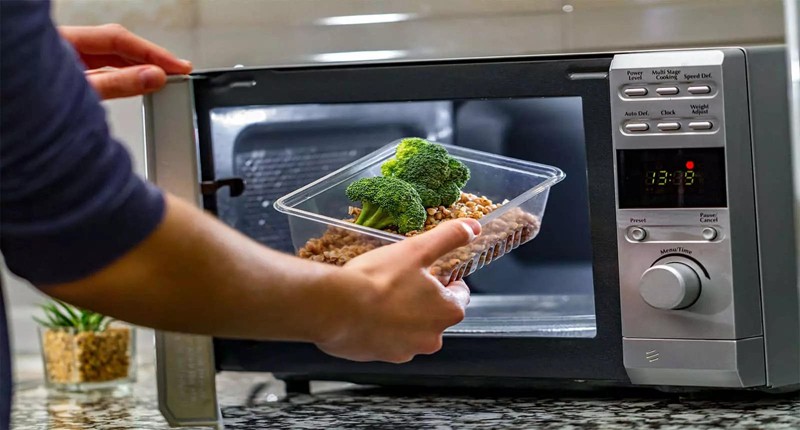19/11/2023
19/11/2023

NEW YORK, Nov 19, (Agencies): Research from the University of Nebraska delivers a clear directive: Avoid microwaving plastics. The common practice of casually microwaving plastics is resulting in the release of significant quantities of tiny plastic particles, with experts identifying more than 2 billion nanoplastics and 4 million microplastics per square centimeter (almost one-sixth of a square inch) in some cases. The concerning aspect is that the impact of these synthetic materials on the human body remains uncertain.
Judith Enck, former EPA administrator and president of the advocacy group Beyond Plastics, emphasizes the need for heightened awareness, stating, "Even this one study should be a wake-up call — not just to new parents but to the FDA [Food and Drug Administration]. They need to be far more proactive."
Nebraska researcher Kazi Albab Hussain and his team conducted a study, commencing in 2021, involving the microwaving of FDA-approved plastic baby bottles filled with water and food-simulating liquids for three minutes.
Results indicated that children could ingest microplastics as a consequence.
Hussain, a new parent during the study, acknowledged the challenge of entirely avoiding plastic use for his baby. However, he made efforts to avoid scenarios that led to increased micro- and nanoplastic release, emphasizing the importance of informed choices.
These minuscule plastic particles have been discovered in diverse environments, including the highest peaks and deepest oceans on Earth. A study by Henry Ford Health found that 77% of people tested had microplastics in their blood.
Certain microplastics are composed of PFAS, known as "forever chemicals" due to their slow degradation. Government estimates suggest PFAS is present in the blood of up to 97% of Americans.
While ongoing research explores the impact of microplastics and PFAS on the body, Hussain notes that numerous studies, including theirs, indicate a strong link between toxicity and exposure levels.
In an experiment, experts exposed kidney cells to microplastics released during the bottle-microwaving study, resulting in a 75% cell death rate, suggesting a potential connection to kidney harm.
The primary advice: avoid microwaving plastics. Hussain expresses hope for the development of plastics with fewer particle releases, envisioning a future where products carry labels indicating they are "microplastics-free" or "nanoplastics-free."
For now, alternative products like edible plastic-free food wraps, compostable coffee pods, tea bags, and glass baby bottles offer similar functionality without introducing tiny plastic particles.


